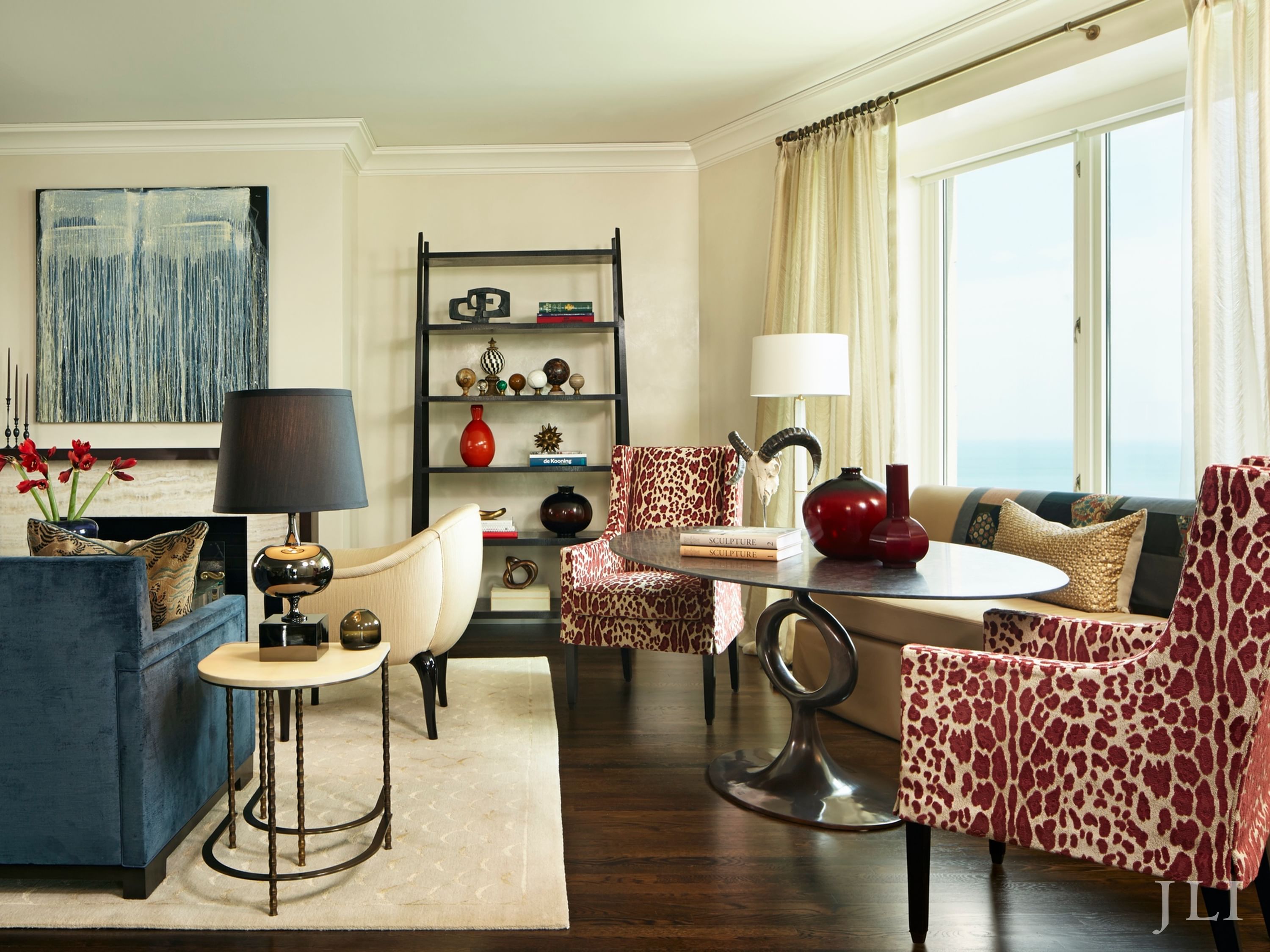15 Interior Design Tools Every Luxury Home Should Have
Picture-perfect! That’s how our clients (and most of us) like our homes to look all the time. And when we install a project—that’s exactly how it does look. But achieving perfection takes a lot of work and involves a horde of interior design tools. Some are obvious, but many are gadgets that most of our clients don’t think about. Yet they’re so essential in luxury interior design that we take them to every install (which means a lot of schlepping when we’re working outside Chicago). Given how important these tools are to us as interior designers, we thought fellow perfectionists would be interested in knowing about them as well.

Perfectly placed furnishings, a super-level carpet and flawless drapes are easier imagined than executed. It takes lots of tools to make a home picture-perfect. Photo: JLI Pied - á - Terre
1. Measuring Picks: For sizing things up, everyone needs a few good tape measures. Most of you are used to the mechanical type, but we wouldn't dream of doing an install without a laser tape measure that lets us point and shoot, literally. The best we’ve found is by Bosch, which they claim is the world’s smallest laser range finder. Yet it measures distances of 130 ft., which is perfect for measuring long hallways and entire rooms. We also have a favorite mechanical tape measure, a sleek little stainless steel version by Stotz Design that stretches 10 feet and is sold at the Museum of Modern Art Store.

We can take our Bosch laser rangefinder everywhere thanks to its compact profile and exact measurements. Photo: Bosch
2. Wrinkle Beaters: What to do when your drapes don’t lay right, your pillow is crinkly or your sheets are rumpled? We break out our steamers and are so dependent on this interior design tool that we really do take a full-size version to every job site. Rowenta’s Valet steamers are head and shoulders above the rest and come in two sizes (one with a surface support for sheets and the other more compact). But we also take our Shark Press and Refresh everywhere (and sometimes use two steamers at the same time). Consumer Reports agreed with our acumen; the Shark took the top spot in their latest ranking.

Our two-pronged approach is to have the Rowenta Valet steamer for the big jobs, and the Shark Press and Refresh for touch-ups. Photos: Amazon and Amazon
3. Sticking Authorities: Don’t underestimate sticking power. We use tape on drapes if they need to be wrangled into shape until they settle down; on rugs that need to be secured in place so you don’t trip on their edges and break your neck; and to mark out layouts on floor and walls—and more as needs arise. But we need a different kind of tape for each task. Depending on a fabric’s fragility, we may use masking tape—or Painter’s Tape, an easily removable version is ostensibly for helping painters make straight lines, but has oh-so-many-more uses and comes in oh-so-many widths. There are also dozens of different types of carpet tapes, and which one to use depends on the rug’s fiber, placement and size. But one thing we never forget it the obvious: strong, sharp scissors. We have many, but our current favorite is this version from Nate Berkus.

Picking which tape to use is part science, part art. Just make sure you have plenty of options—and sharp scissors—on hand. (Photos: Quill and Target)
4. Protective Layers: The point is to keep burnished wood, tile or stone floors and surfaces scratch-free. That takes protective felt pads for furniture and accessories, also known as ‘floor shepherds.” We buy them en masse. And when we do accessory installations, we display all of our items on a flat surface so we can carefully pick and choose which piece we want to use in each location. We use bubble wrap to keep our working surfaces, which can be a table or the floor, scratch-free. Of course, we also use it the traditional way by swaddling it around our precious cargo so nothing breaks. (Images: Amazon)

Think combo packs, and lots of them, when it comes to felt floor pads—especially since you may need a specific size to fit perfectly under your table legs or accessories. Photo: Amazon
5. Project Binders: What happens when something breaks, frays, fades or you just plain want to replace it? Our Project Binders, organized by room, include information on every feature in a home, from the layout of a room and the sizes of every piece in it to the finishes, makers, model numbers and warranties of every furnishing and appliance. We can attest to the fact that it makes repairs and replacements must easier to negotiate in the future.

Project Binders put everything you need in one easy-to-find place. Photo: Quill
6-15: The rest are obvious, so you can pick whatever you like. Just make sure you have them on hand!
6. Sewing kit
7. A good level
8. Cleaning potions, from Windex to Soft Scrub.
9. GooGone
11. Velcro
12. Paper towels
21 Feb 2016




